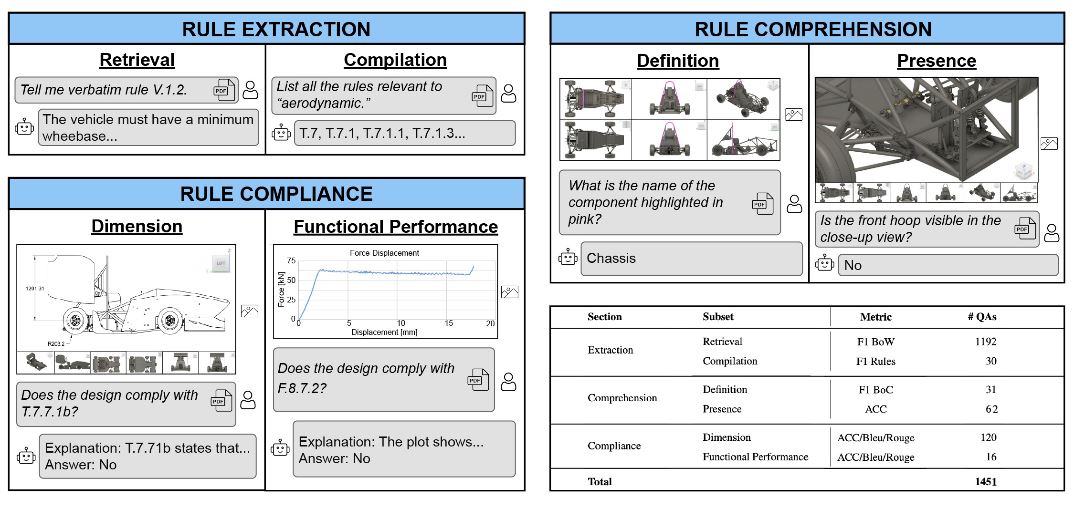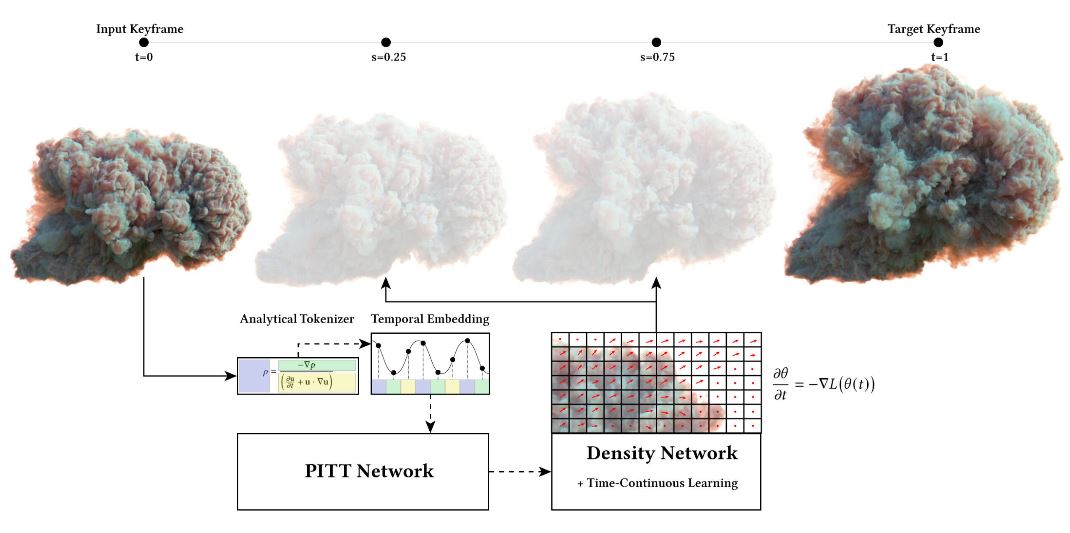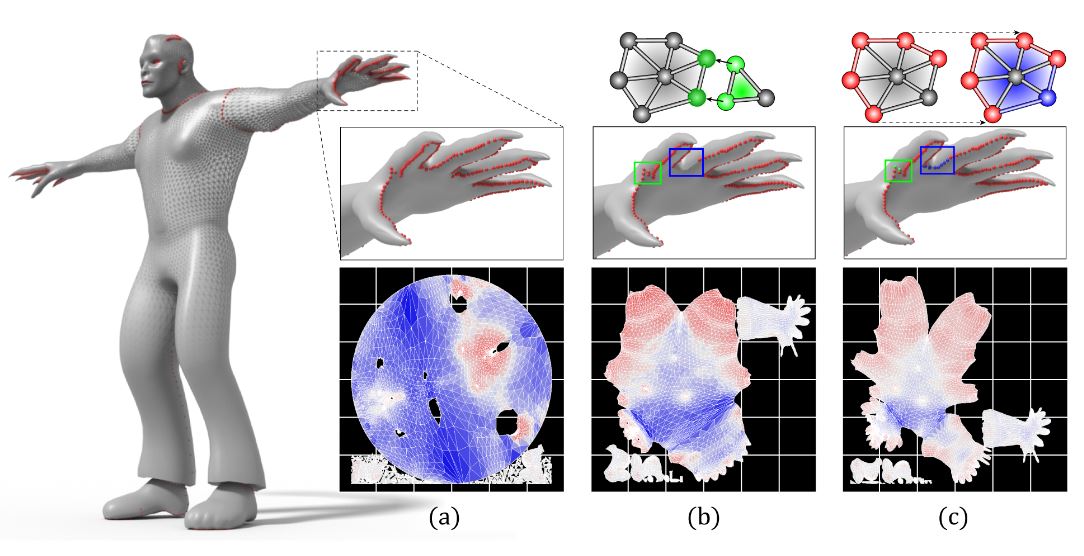Recently Published by Autodesk Researchers
Autodesk Research teams regularly contribute to peer-reviewed scientific journals and present at conferences around the world. Check out some recent publications from Autodesk Researchers.
This research introduces DesignQA, a novel benchmark aimed at evaluating the proficiency of multimodal large language models (MLLMs) in comprehending and applying engineering requirements in technical documentation. Developed with a focus on real-world engineering challenges, DesignQA uniquely combines multimodal data-including textual design requirements, CAD images, and engineering drawings-derived from the Formula SAE student competition. The benchmark features automatic evaluation metrics and is divided into segments-Rule Comprehension, Rule Compliance, and Rule Extraction-based on tasks that engineers perform when designing according to requirements. The team evaluates state-of-the-art models like GPT4 and LLaVA against the benchmark, and the study uncovers the existing gaps in MLLMs’ abilities to interpret complex engineering documentation. This benchmark sets a foundation for future advancements in AI-supported engineering design processes.
FluidsFormer: A Transformer-Based Approach for Continuous Fluid Interpolation
FluidsFormer is a transformer-based approach for fluid interpolation and edition within a continuous-time framework. By combining the capabilities of a Physics-Informed Transformer Token (PITT) architecture and a residual neural network (RNN), the team analytically predicts the physical properties of the fluid state. The network architecture enables the team to interpolate substep frames between simulated keyframes, enhancing the temporal smoothness and sharpness of physics-based animations. This demonstrates promising results for smoke interpolation and conduct initial experiments on liquids.
GraphSeam: Supervised Graph Learning Framework for Semantic UV Mapping
Recently there has been a significant effort to automate UV mapping, the process of mapping 3D-dimensional surfaces to the UV space while minimizing distortion and seam length. Although state-of-the-art methods, Autocuts and OptCuts, addressed this task via energy-minimization approaches, they fail to produce semantic seam styles, an essential factor for professional artists. In this work, the team uses Graph Neural Networks (GNNs) to propose a fully automated UV mapping framework that enables users to replicate their desired seam styles while reducing distortion and seam length. Augmentation and decimation tools enable artists to create their dataset and train the network to produce their desired seam style. Additionally, the team provides a complementary post-processing approach for reducing the distortion based on graph algorithms to refine low-confidence seam predictions and reduce seam length (or the number of shells in our supervised case) using a skeletonization method.
Get in touch
Have we piqued your interest? Get in touch if you’d like to learn more about Autodesk Research, our projects, people, and potential collaboration opportunities
Contact us